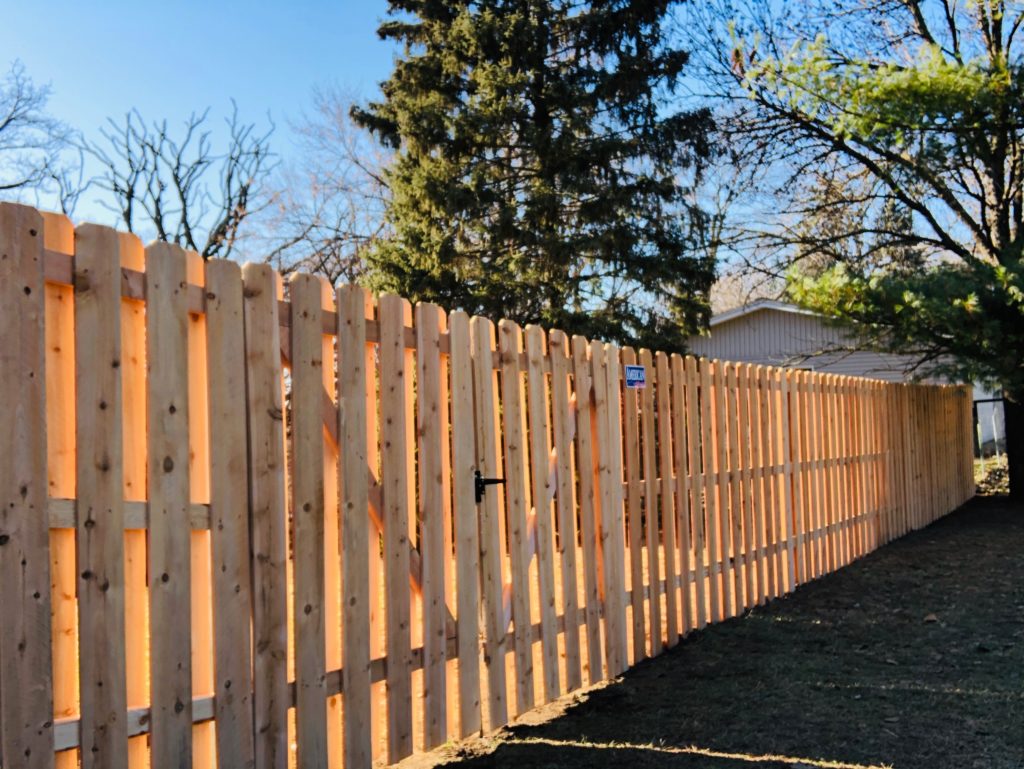How To Select The Best Wood Posts For My New Fence

Whether you are going to hire a contractor, or install a new wood fence yourself, you will have to decide on the type of wood you want to use. Let’s first start with the post.
- Research what is available in your area for species. Today, there are many new species of wood fence posts available from your fence contractor to the box stores. Instead of settling, check out these available options.
- What do you think about treated southern yellow pine? This is the least expensive option and the most readily available. These pine posts are ACQ2 treated, an environmentally safe chemical that will assure these posts will last for several years. These posts are highly prone to warping and twisting. Once you have pulled the posts from a bundle; you should set these as quick as possible and start to build your fence. This will assist in curbing some of the twisting and bowing. These posts are also prone to developing long verticle cracks also known as “checks” which is the post way of relieving the pressure of the pressure treated applied chemical. These pine posts are not a good option if you are going to use a stain finish on your fence as the stain does not absorb well over the treatment. If you do not like the green color of the post; over time it will not fade.
- What about a treated white pine? These posts are typically available through the more reputable fence contractors. More expensive than a southern yellow pine, the white pine is treated with the same ACQ2 treatment. These posts however are less likely to twist and bow. The white pine reacts differently to the pressure treatment and typically develops some slight twisting. The white pine will develop long vertical cracks, also known as “checks”. White pine treated posts are not a good option for staining and also will have a slight green tint.
- What about a western red cedar? These posts are difficult to find. As old growth western red cedar is restricted from harvesting, only new growth is available to harvest. This makes the supply limited and pushes the price point up. Wood mills are electing to mill western red cedar for other more high end uses like decorative beams and siding. What is available in western red cedar fence post is almost entirely sap wood. This is the outer rings of the tree that are still alive and do not carry those natural preservatives found in the heartwood. These post will not last long. Western red cedar is desired for its unlikely nature to bend, twist, or bow.
- What about an incense cedar? These posts are available through select box stores and your fence contractors. This is an excellent choice if you want the look of a cedar and plan on doing a stain finish on your fence. Incense cedar is grown in the southern coast of the United States of America. Blonde in color, incense cedar is much lighter than your western red cedar. As there is an abundance of incense cedar, fence posts will come from a mix of heartwood and sap. These posts have many of the same characteristics of western red cedar in that the posts are unlikely to significantly bend, twist, or bow.
- What about a lodge pole pine? Growing in popularity, this species is very comparable to a white pine. Lodge pole pine must be pressure treated if it is for in ground use. Light in color, lodge pole pine will also have a green tint after treatment.
Interested in purchasing wood posts for your fencing project? Visit our online store for local pickup www.localstore.siouxfallsfencecompany.com.